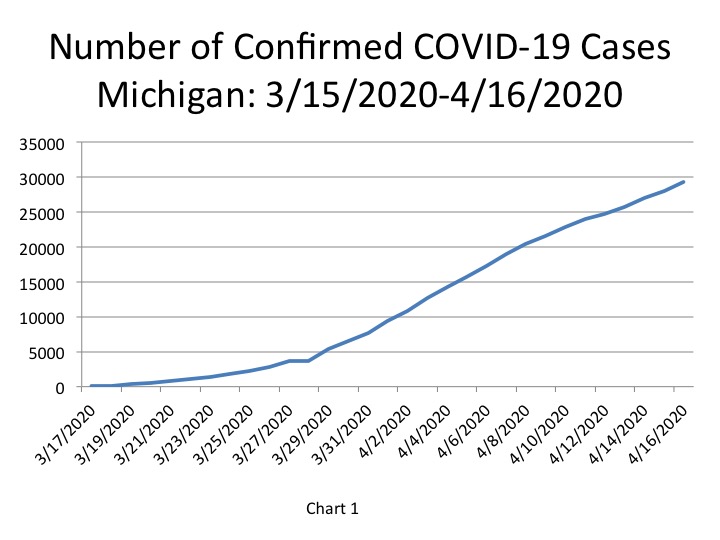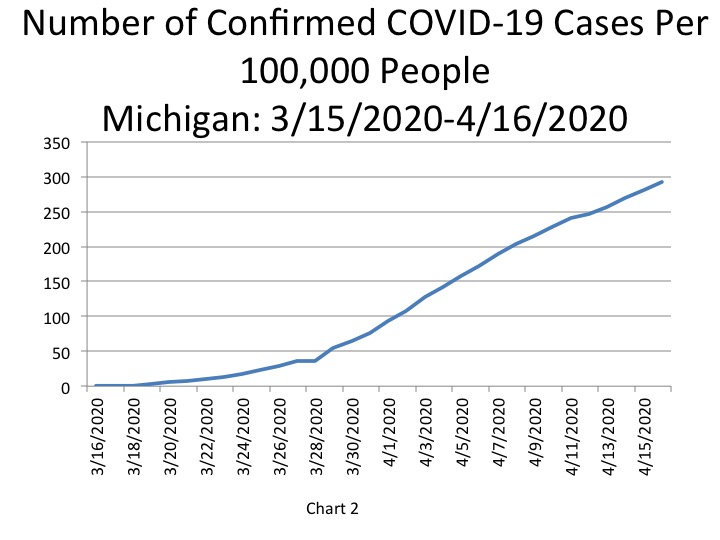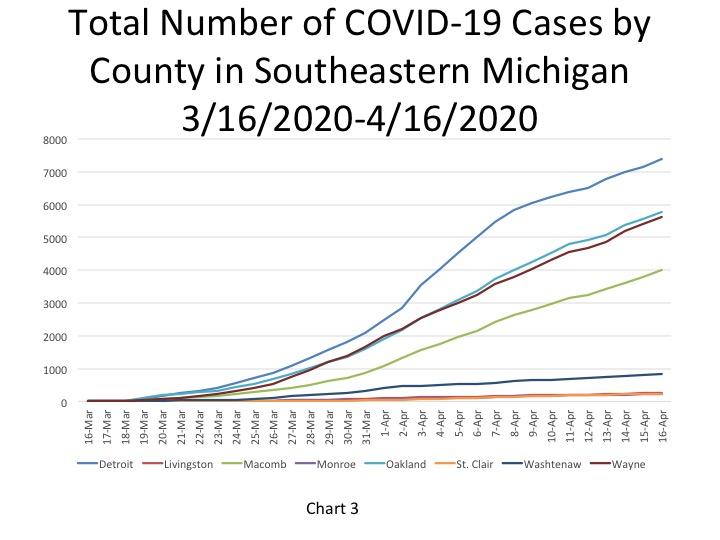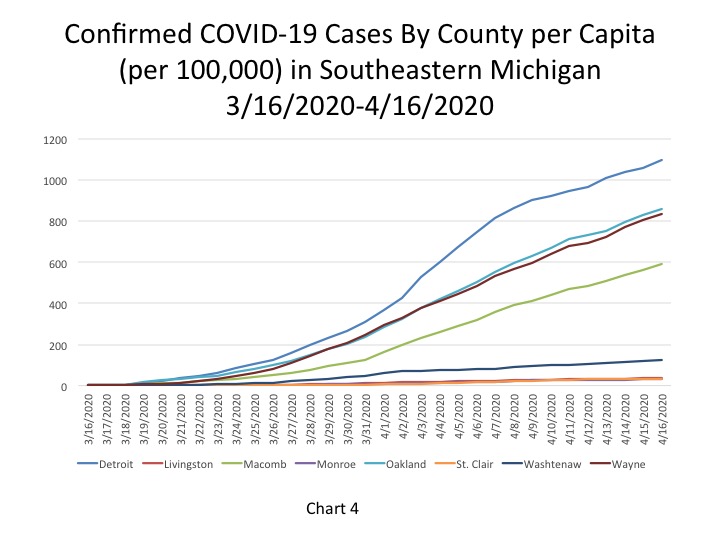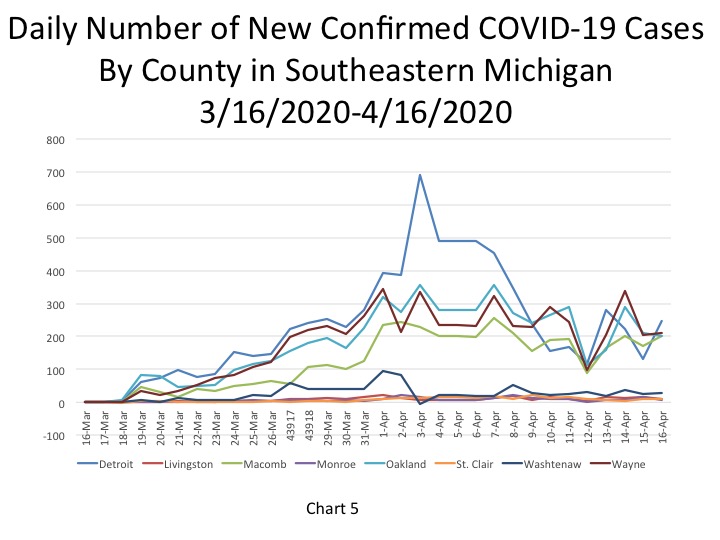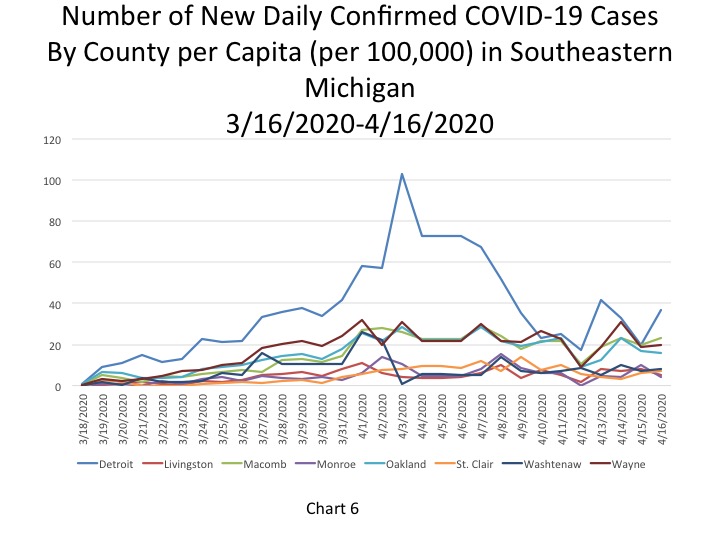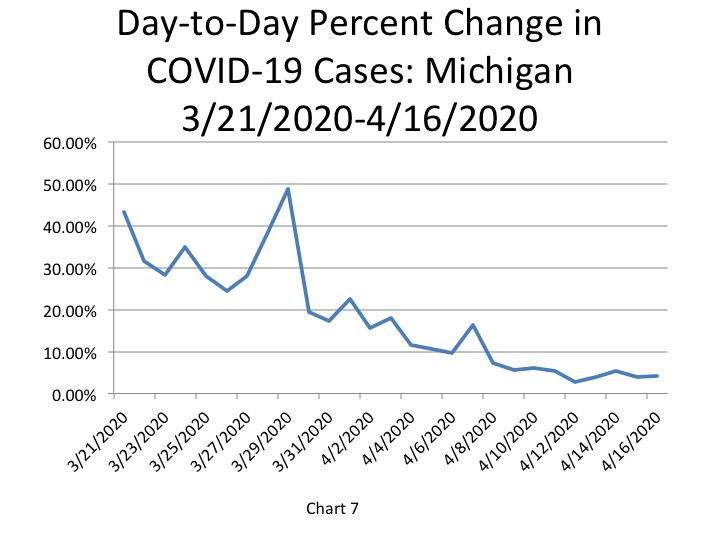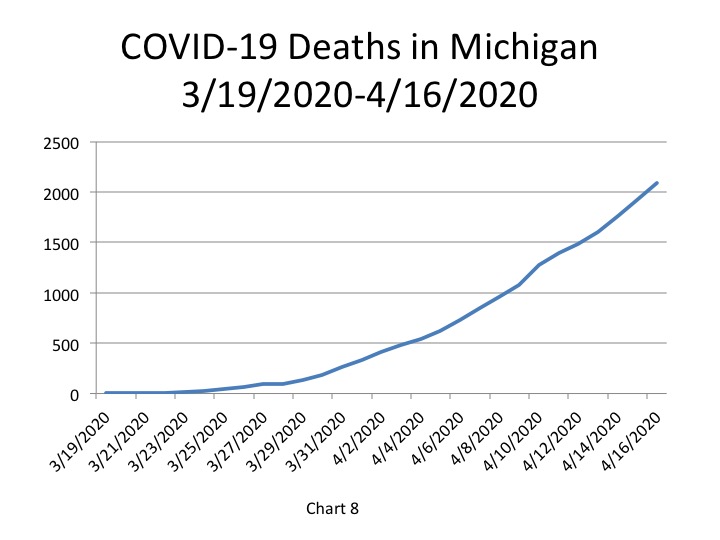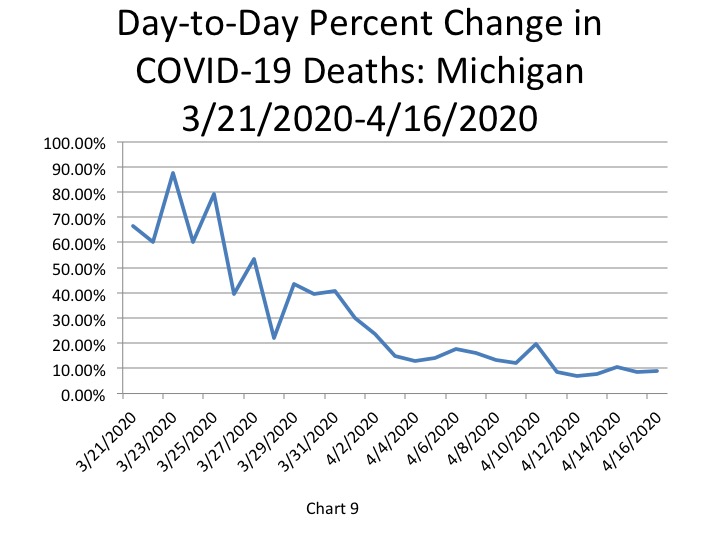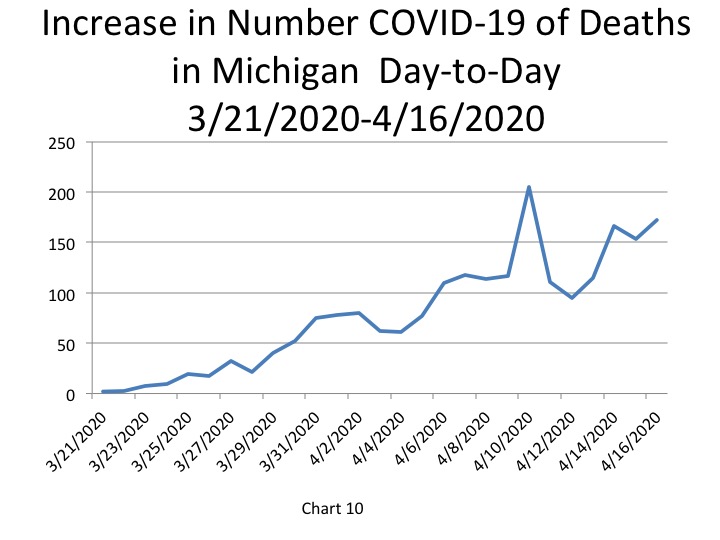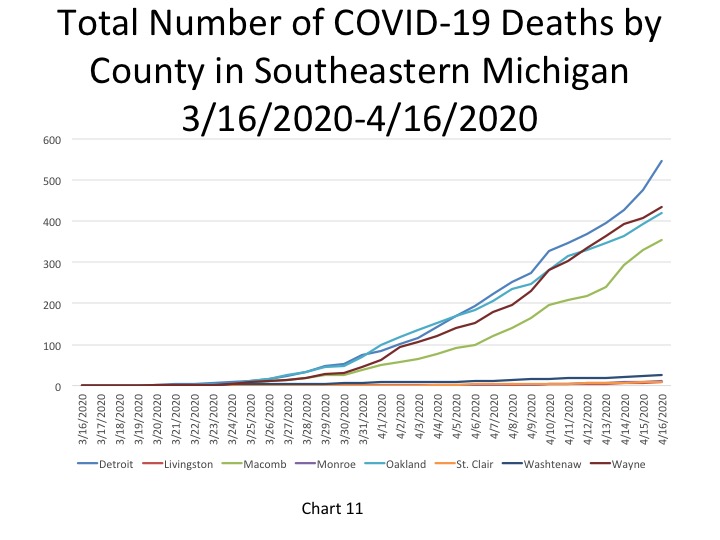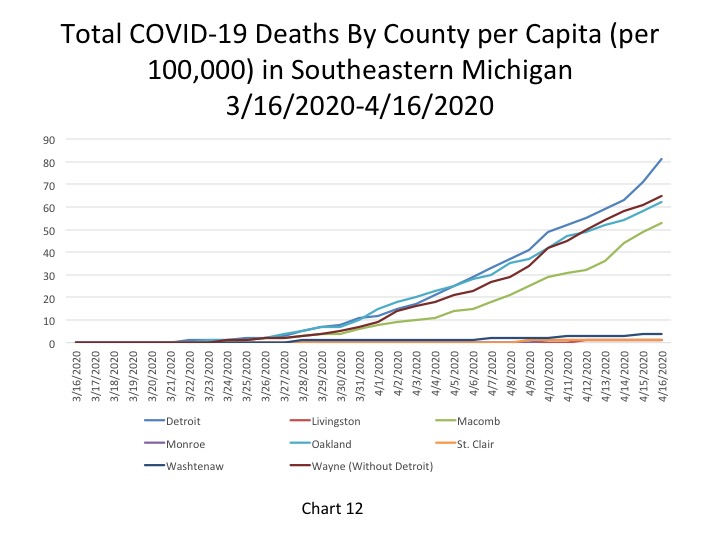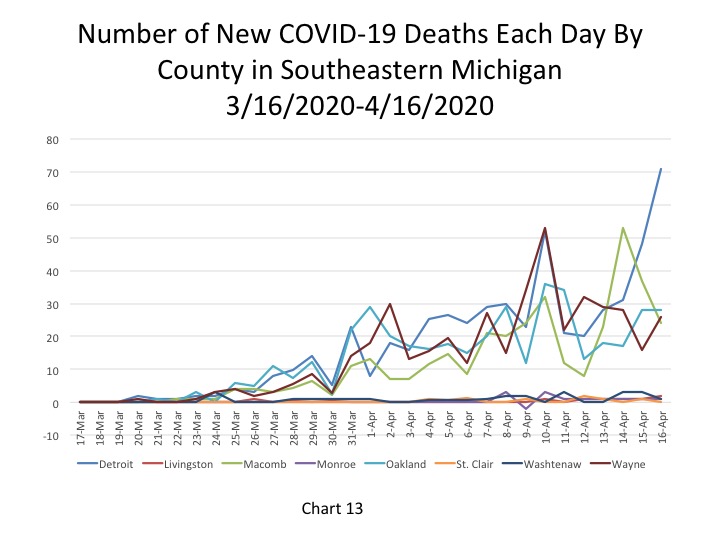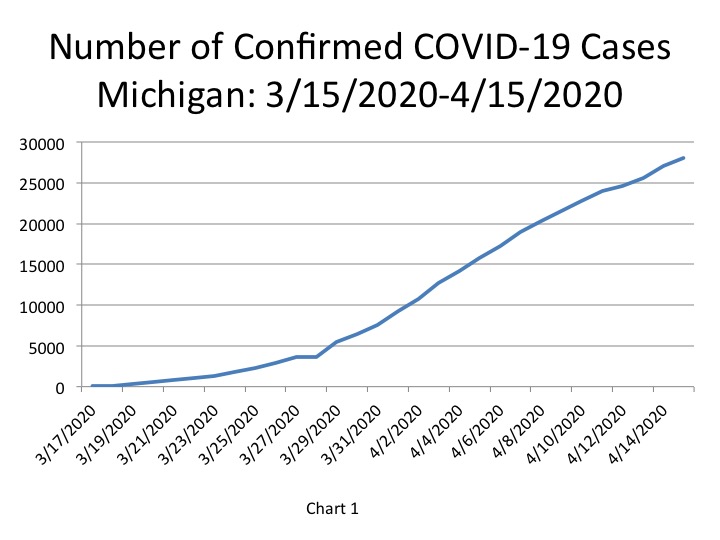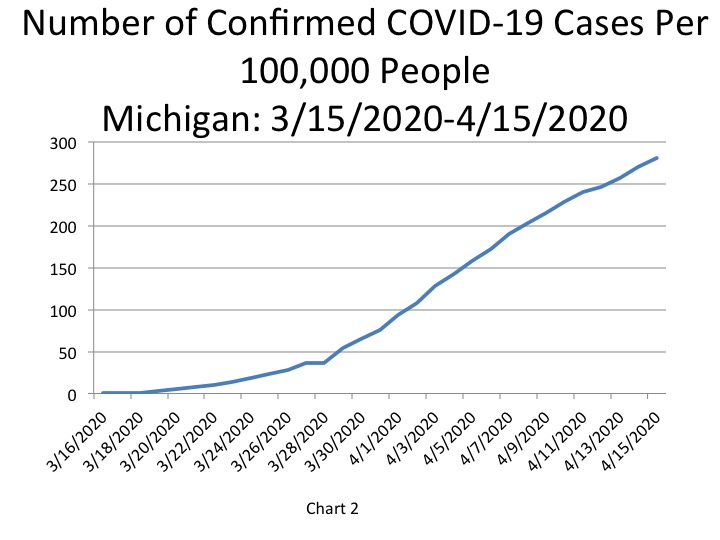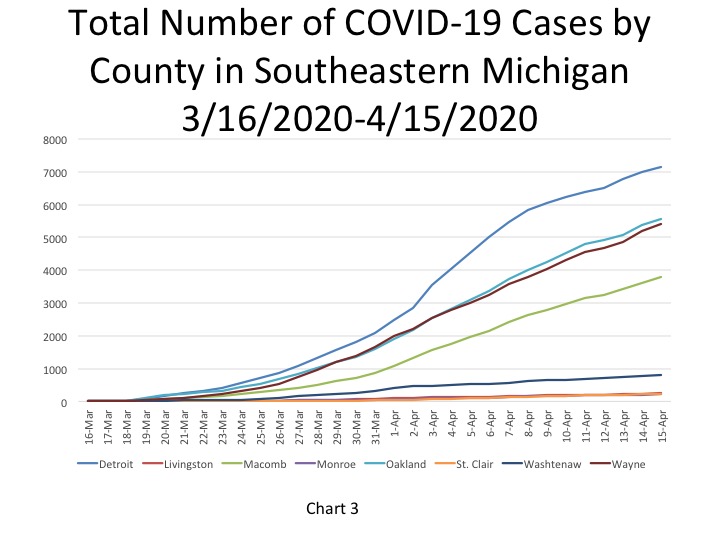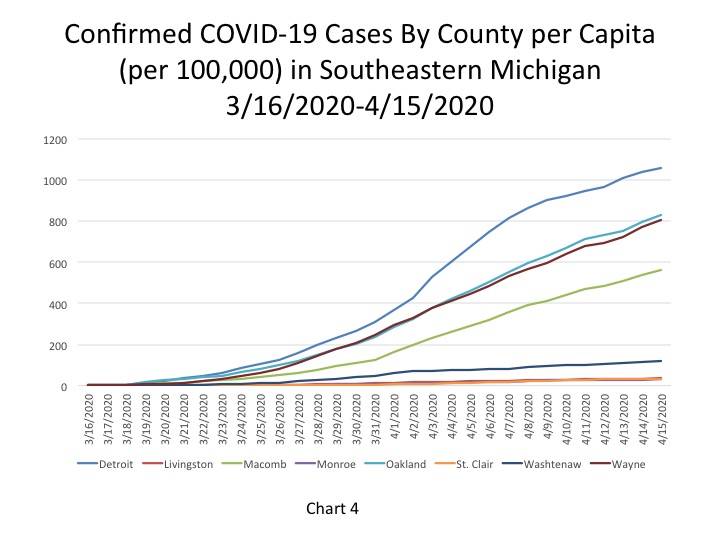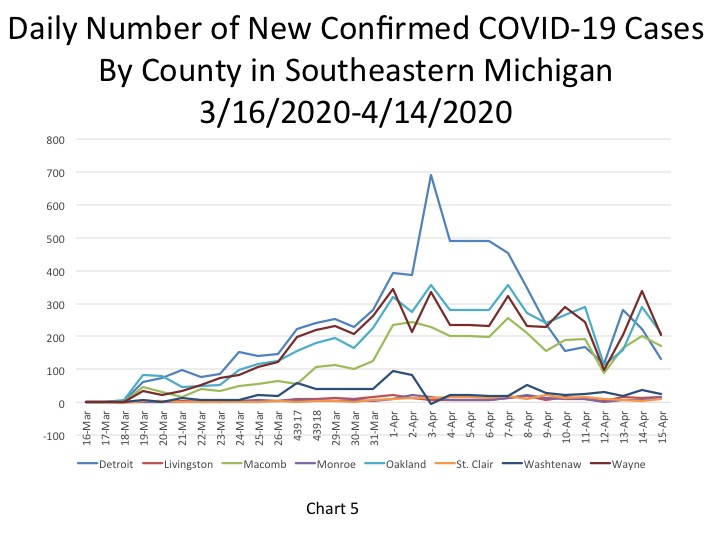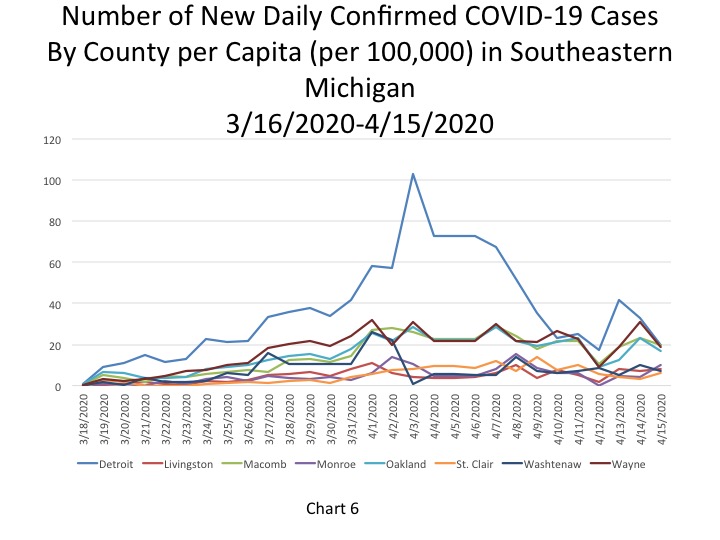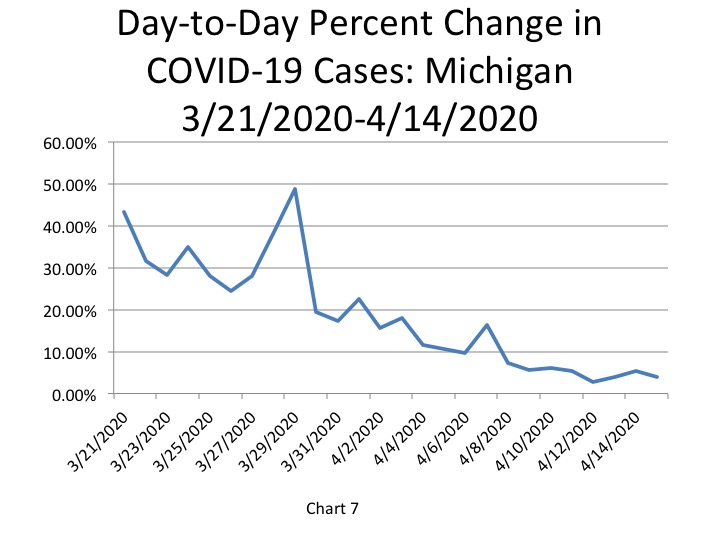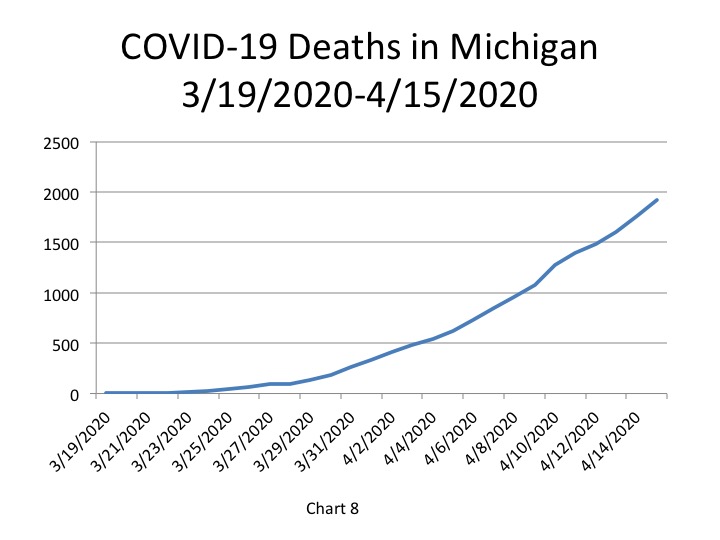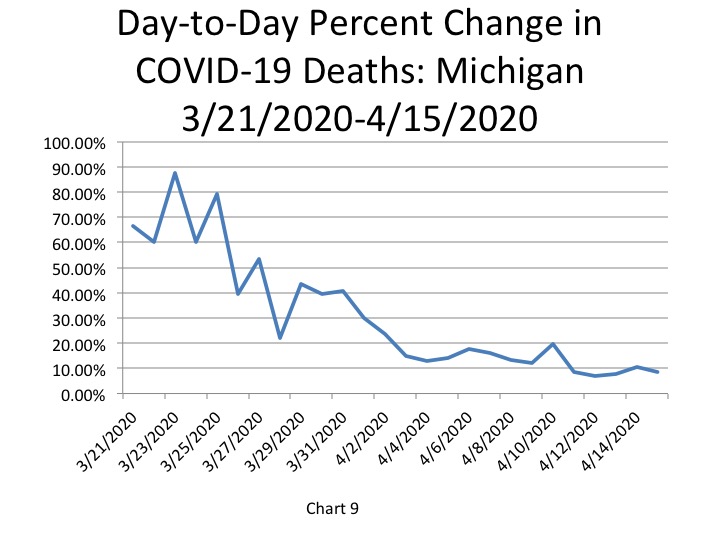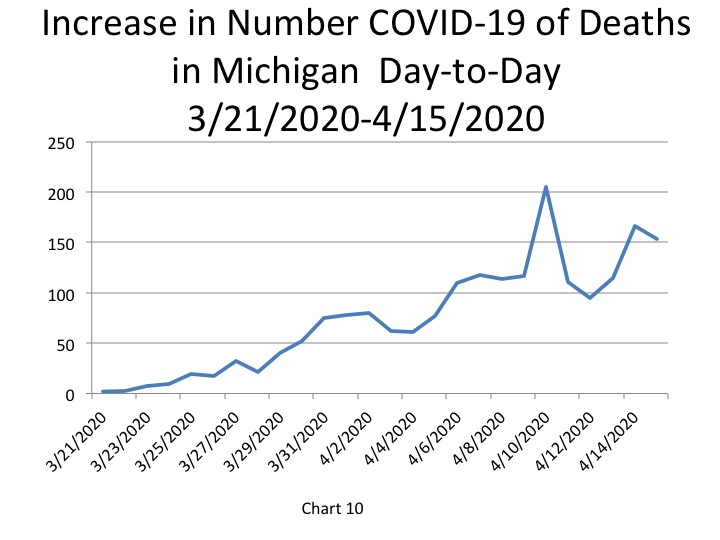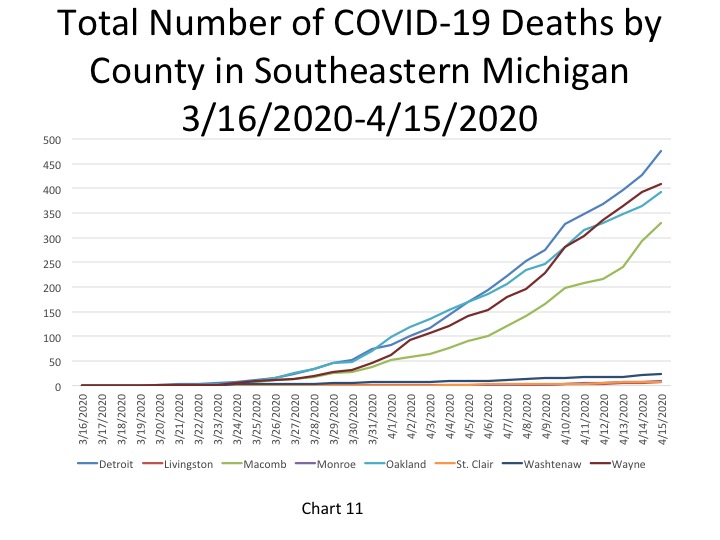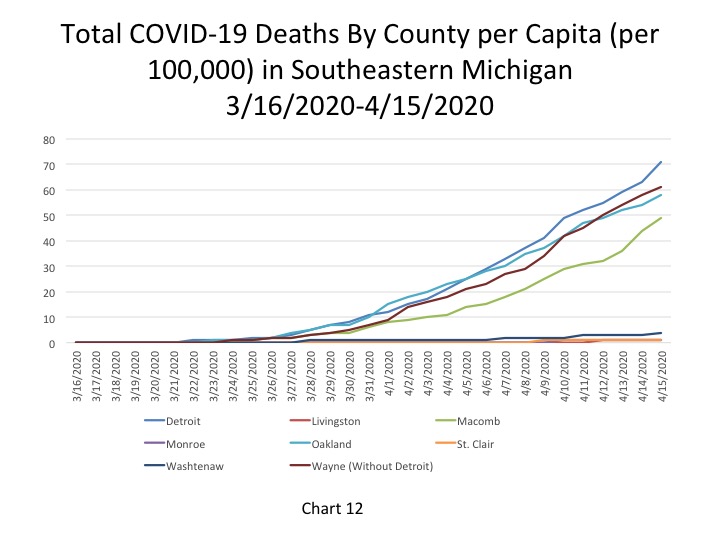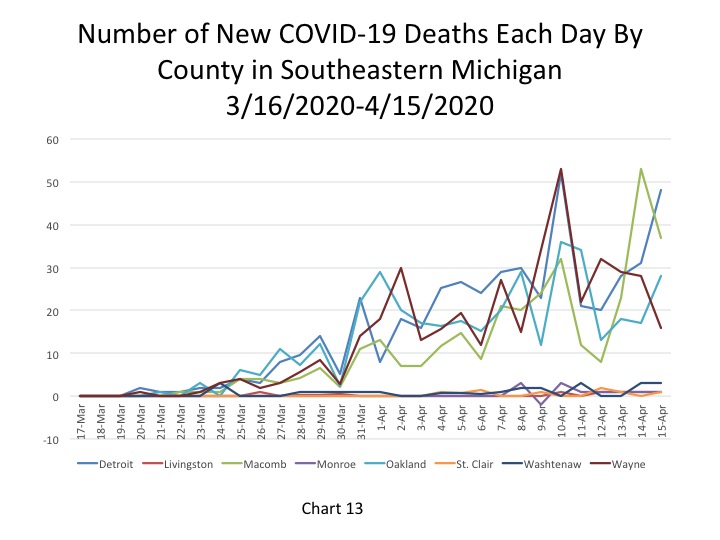The total number of COVID cases in Michigan increased to 31,424 (Chart 1), which was equivalent to 314 cases per 100,000 people (Chart 2) on April 19. Of those total COVID cases, the City of Detroit had 7,604 cases, Oakland County had 6,109 cases, Wayne County (excluding Detroit) had 6,088 cases and Macomb County had 4,360 cases (Chart 3). The number of confirmed cases in Washtenaw, Livingston, Monroe and St. Clair counties combined totaled 1,626, with Washtenaw County accounting for 870 of those cases, according to the most recent data from the State.
The daily data highlighted in these posts is from Michigan.gov/coronavirus, where data is updated daily at 3 p.m. Historical data was supplied from covidtracking.com, which republishes COVID data from the State.
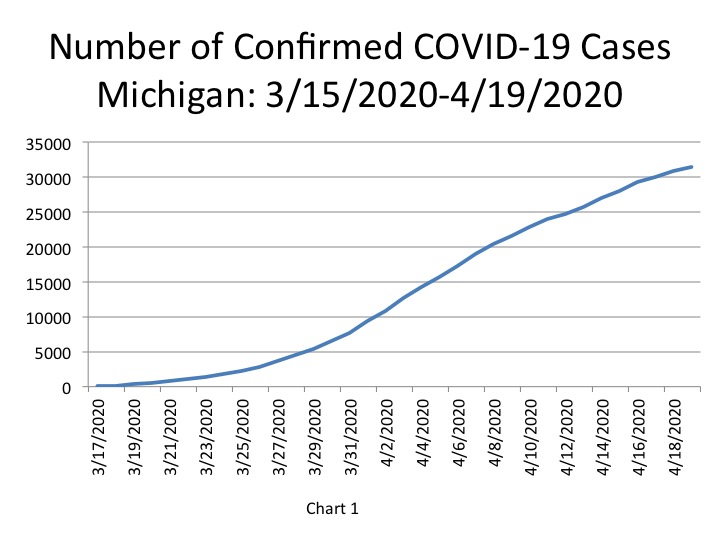
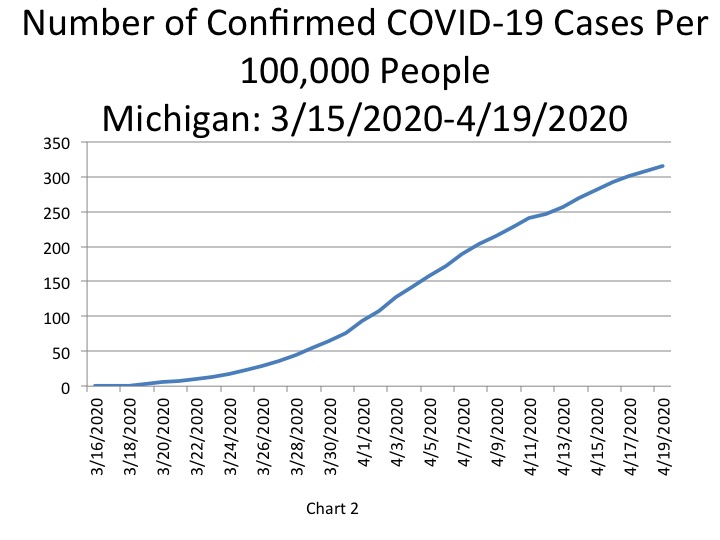
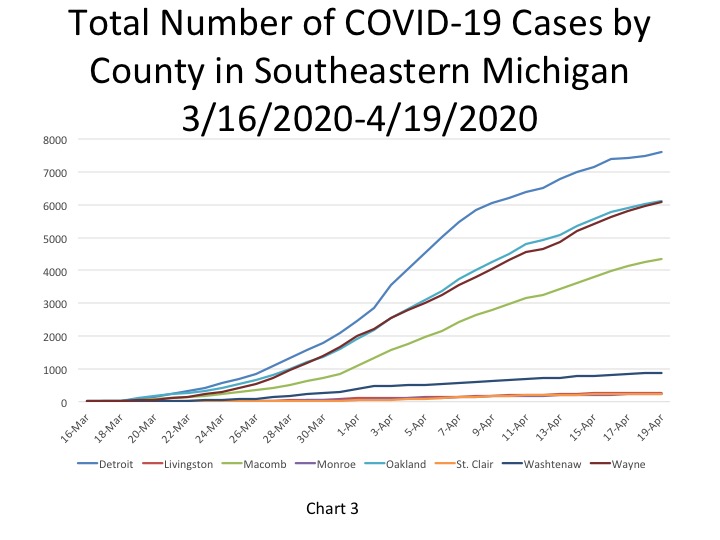
In Chart 4 we see that the City of Detroit has consistently had the highest number of COVID cases per 100,000 people, which was a rate of 1,130 on April 19. Oakland County had the second highest rate at 908 cases per 100,000 people and Wayne County (excluding Detroit) had 905 cases. Macomb County had 648 COVID cases per 100,000 people.
Chart 5 shows that there have been increases in the number of new daily COVID cases for Detroit and Macomb and Monroe counties. The number of new cases in Detroit on April 19 was 107, an increased from the new reported new cases of 83 on April 18. In Macomb County the number of new cases on April 19 was 109 and in Monroe County it was 9. For Oakland County, there was 88 new COVID cases reported on April 19, a continued decrease in the number of new cases since April 14. Wayne County has been experiencing a decrease in the number of new cases since April 16; on April 19 Wayne County reported 114 new cases.
According to the data, Detroit had a rate of 16 new COVID cases per 100,000 people on April 19; this was an increase through the weekend but a rate that is about half what it was during last week, and it was huge drop from Detroit’s peak. Macomb County was the only other county in the region with a rate about 10; Macomb County had a rate of 12 new COVID cases per 100,000 people on April 19 (Chart 6).
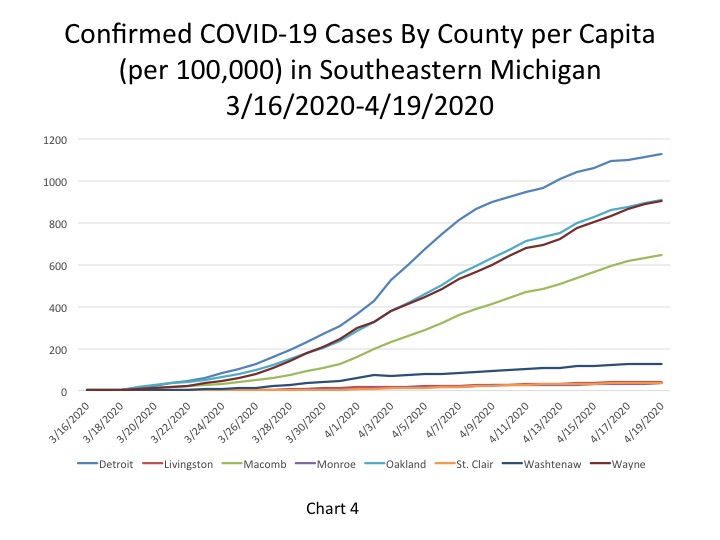
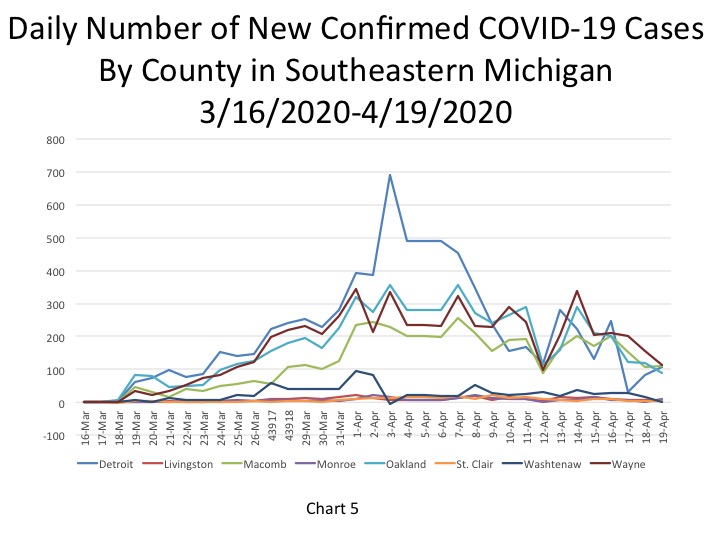
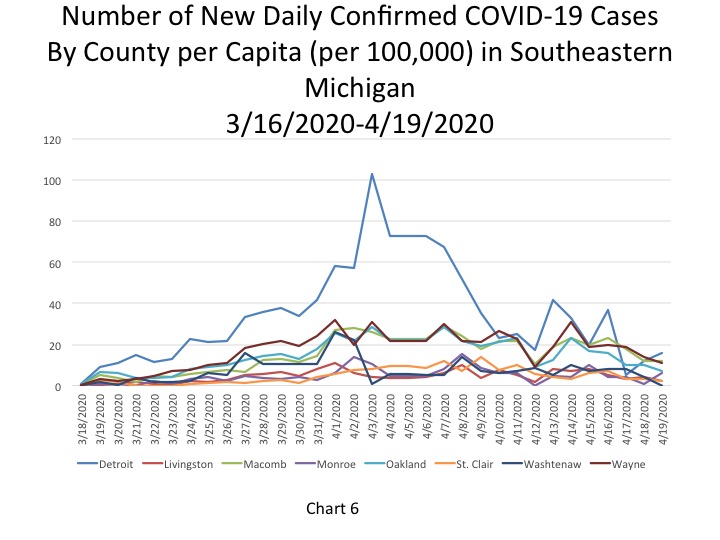
In addition to the raw data of confirmed cases, we also show the percent change in the number of cases reported day-to-day. On April 19 the percent change from April 18 was 2 percent, a decrease from the day’s prior change of 2.6 percent.
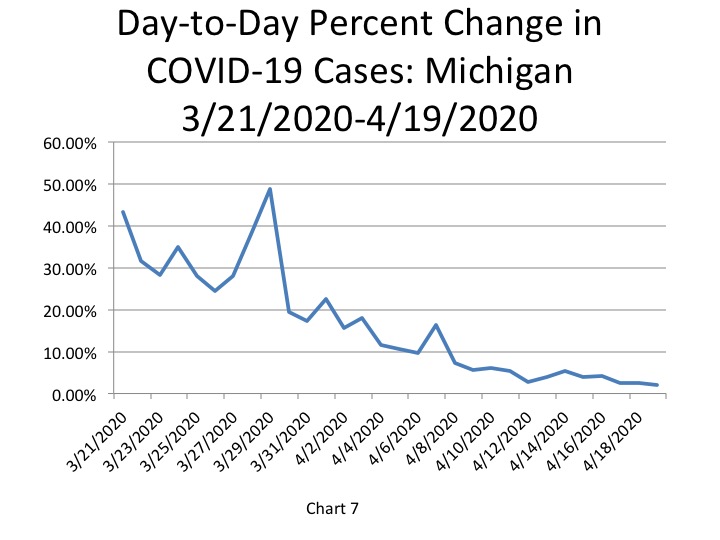
It was reported by the State of Michigan that on April 19 the total of COVID-19 deaths reached 2,391. This was a 3.6 percent change from April 18, which was nearly same as the percent change in new daily deaths from the day prior (Chart 9). The 2,391 total deaths reported for April 19 was 83 deaths higher than what was reported on April 17 (Chart 10); this was two deaths higher than the number of daily deaths reported on April 18.
Of the total deaths reported, the number of COVID deaths in Detroit increased by 29 from the day prior. On April 19 the total COVID deaths across time was 619 (Chart 11). Also on April 19, the Michigan Department of Health and Human Services also reported 501 total deaths in Wayne County (excluding Detroit), 471 in Oakland County and 391 in Macomb County (Chart 11).
On a per capita basis, per 100,000 people, Detroit also continues to have the highest number of deaths per 100,000 people at 92 on April 19 (Chart 12). Wayne County had 74 COVID deaths per 100,000 people, Oakland County had 70 and Macomb County had 58.
Chart 13 shows that Detroit reported the highest number of new deaths on April 19 at 29; Wayne County reported 20 new daily deaths, and Oakland County reported 13. For Oakland County, the number of new daily deaths has continued to decrease since April 16; also note the number of new cases in Oakland County has been decreasing since April 14.
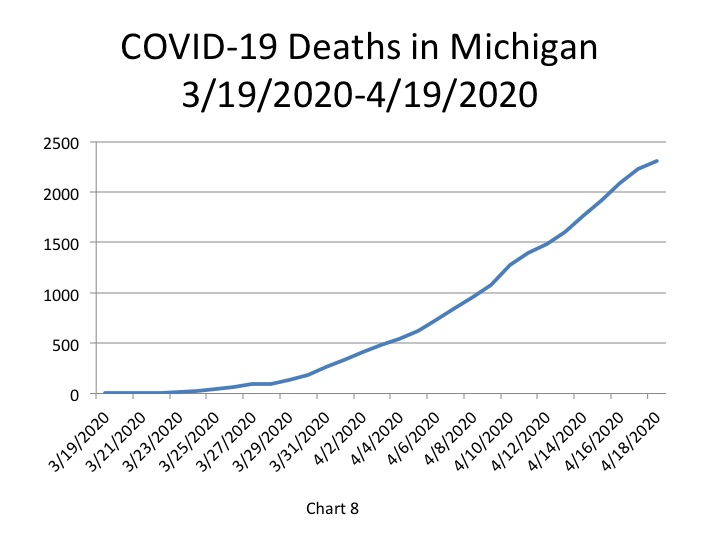
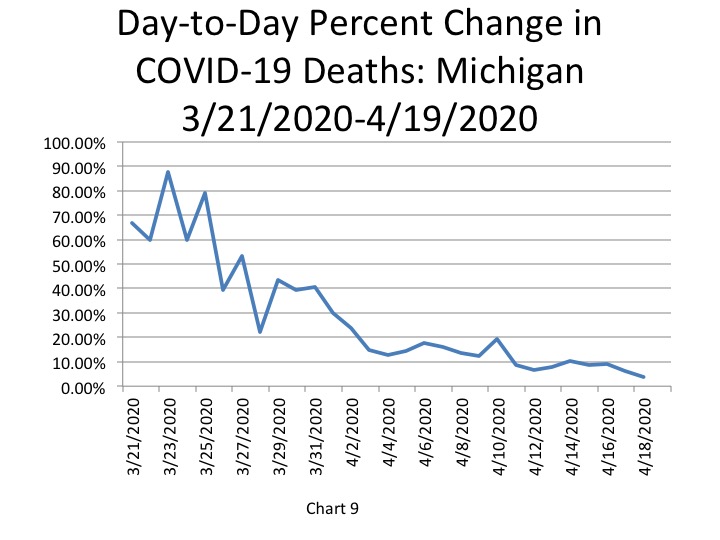
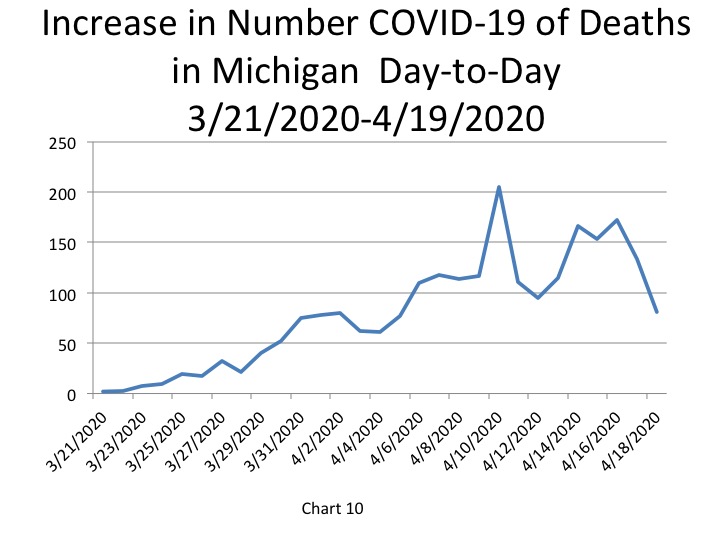
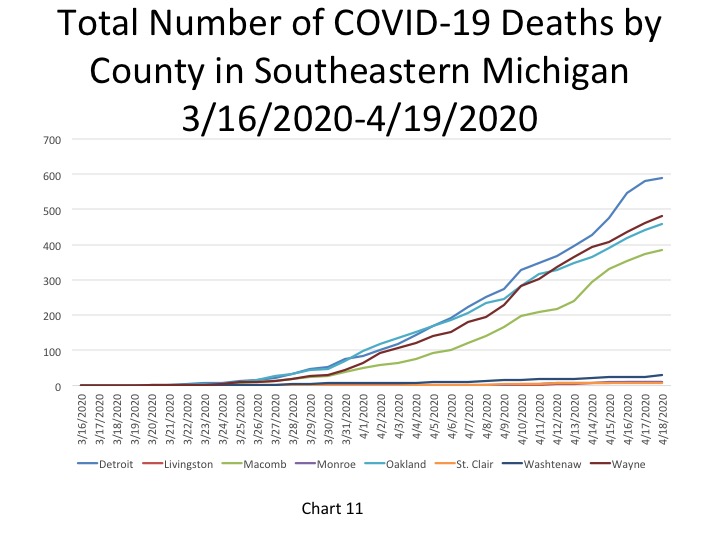
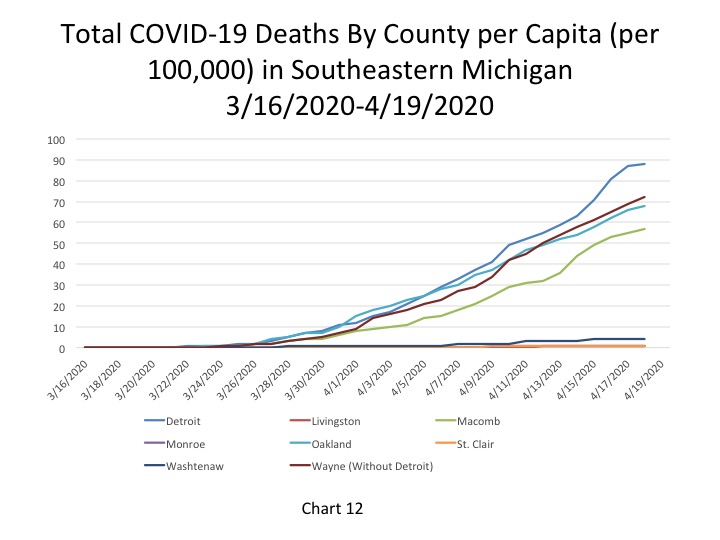
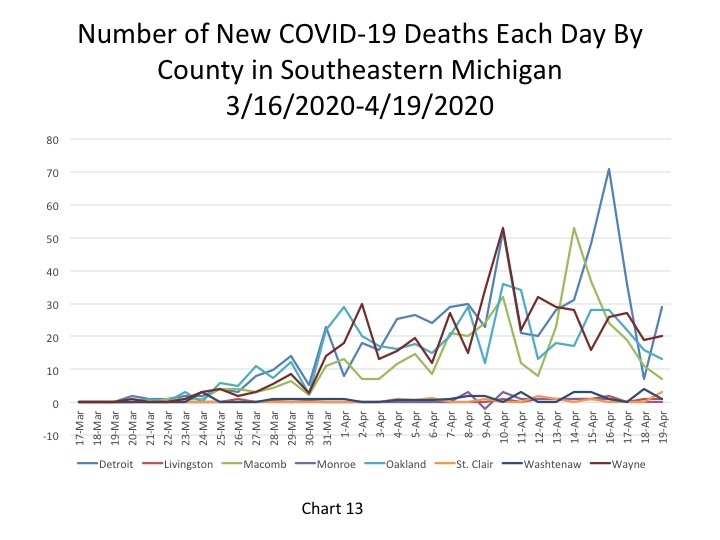
The final two charts below show the case death rates for the State of Michigan and for Detroit and the seven counties in Southeastern Michigan. To determine the rates we divided the reported deaths from each day by the number of total COVID cases each day.
On April 19 the COVID case death rate in Michigan was 7.5 percent; a slight increase from the 7.4 percent death rate reported the day before.
Of Detroit and the counties in the region, Macomb County had the highest case death rate on April 19 at 9 percent; it has been the highest since April 14. Wayne County (excluding Detroit) also had a higher death rate than Detroit. Wayne County’s death rate was 8.2 percent on April 19 and Detroit’s was 8.1 percent. The death rate for Oakland County was 7.7 percent, and, while the number of new cases and new deaths has been decreasing since in Oakland County over the last few days the death rate has been increasing.
These rates of death are very sensitive to the number of tests that are being completed across the region. In state or countries where far more testing is completed, death rates may be substantially lower. The failure of the CDC to complete and broadly distribute an early and accurate test has had huge consequences.


As the number of new COVID cases and deaths is increasing at a slower rate we do see that death rates for at least Detroit, Macomb, Oakland and Wayne counties are still increasing. While we know that the Stay at Home order is playing a large role in slowing the spread of the virus, how the virus is affecting those who have been infected is something we must watch, both in terms of death rates and other long-term effects for survivors.
